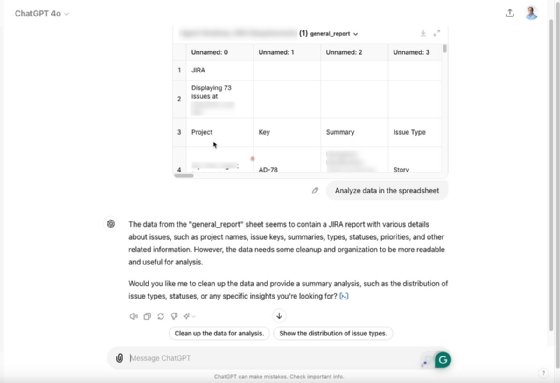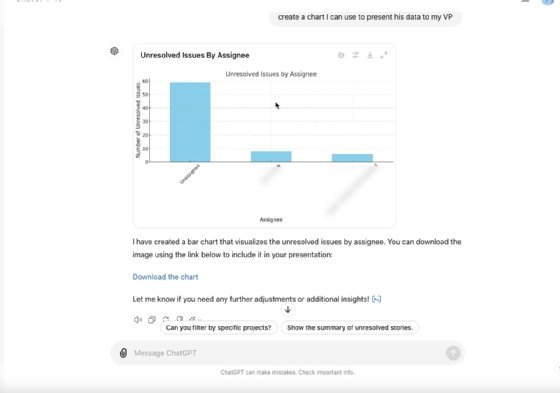
Getty Images
What businesses should know about OpenAI's GPT-4o model
Enterprise use cases are driving the need for faster AI response times, better data handling and cost optimization. OpenAI attempts to meet that need with GPT-4o.
OpenAI's release of GPT-4o -- the latest iteration of ChatGPT -- marks the AI vendor's next step into enterprise use cases.
GPT-4o, in which the o stands for omni, supplements many business use cases, including sales forecasting, task automation and customer support. Building on the earlier GPT-4 model, GPT-4o touts enhanced features, improved capabilities and a new miniaturized version of the model that reduces costs. Organizations considering GPT-4o should evaluate its enterprise-focused attributes -- like data analysis improvements, integration options and multimodality -- along with potential risks and use cases.
GPT-4o in the enterprise
For organizations engaged in data-driven or collaboration-intensive work, GPT-4o is a model worth exploring. It offers enhanced enterprise data analysis, integration into existing workflows, and multimodal support for both audio and video.
Enterprise data analysis improvements
Analyzing data is no longer solely a data science or finance team's domain. GPT-4o lets users interact with uploaded data using simple natural language commands, opening new opportunities for team members who don't regularly perform data analysis.
Key data analysis improvements in GPT-4o include the following:
- Corporate data integration. Users can now import data directly from Google Drive and Microsoft OneDrive. GPT-4o supports intake and interpretation of data from Google Sheets, Docs and Slides, as well as Microsoft Excel, Word and PowerPoint. It also supports JSON and PDF file formats.
- Data visualization. When users upload data sets -- for example, an export of requirements -- to GPT-4o, the model can create an interactive table, as shown in Figure 1.

- Data cleaning. GPT-4o gives users the option to clean uploaded data, providing an itemized list of changes made during the data cleaning process.
- Exportable charts. In addition to visualizing data within the ChatGPT interface, users can export and download charts for use in PowerPoint and Google Slides. Figure 2 shows an example of creating a chart with GPT-4o.

Integration into existing workflows
There are nonprogrammatic and programmatic options for integrating GPT-4o into existing workflows.
| Nonprogrammatic | Programmatic |
| Custom GPTs as a replacement for corporate writing style guides. | Multilingual voice integration in customer service workflows to reduce costs and improve scalability. |
| Content drafting, including technical documents and marketing assets. | ChatGPT integration with SaaS CRM platforms to automate customer outreach and email campaigns. |
Potential risks and challenges
OpenAI openly identifies GPT-4o's audio modalities as presenting "a variety of novel risks." However, the company has promised to address these risks through ongoing improvements to technical infrastructure, usability and post-training processes.
Although OpenAI is improving data controls, privacy risks remain high for GPT-4o, especially now that users can link it to data repositories. There are even more privacy concerns for businesses that upload corporate data to the public version of GPT-4o.
Maintaining GPT-4o's accuracy and relevance in business contexts also requires a continuous feed of updated data. Such a requirement can become resource-intensive, especially if the company has no established process or framework for maintaining this data stream.
Implementing GPT-4o also doesn't release businesses from the need for human oversight of the content the model generates -- especially for organizations in niche industries, where generative AI models might not understand sector-specific needs or jargon. Constant reviewing of model output can become tiresome for teams with shifting priorities, reducing the efficiency benefits of adopting AI.
Moreover, recent departures of top executives and engineers -- including co-founders John Schulman and Ilya Sutskever -- have raised concerns about potential business, security or technical instability at OpenAI, as any behind-the-scenes turmoil could affect enterprise customers in the future. It's a situation to watch, especially for large businesses considering a significant investment in ChatGPT Enterprise.
GPT-4o, existing ChatGPT users and OpenAI APIs
Organizations already using ChatGPT Enterprise, Team or Plus -- whether as a proof of concept or provisioned to employees -- now have access to GPT-4o. OpenAI made the upgrade nearly seamless, ensuring compatibility with custom GPTs and the OpenAI APIs.
Examples of practical use cases for GPT-4o
Practical use cases for GPT-4o include data analysis, customer support automation, and serving as a front end for documentation and knowledge bases.
Data analysis
Businesses have increasingly come to rely on large amounts of data for decision-making. GPT-4o's democratization of data analysis makes this work accessible even for teams that haven't advanced beyond tools like Microsoft Excel.
Customer support automation
Customer support, even if offshore or already automated, can benefit from GPT-4o's improvements, which enable more intelligent, faster and responsive chatbots. With OpenAI's speech-to-text APIs, there's also the potential to include audio in the support cycle, improving the overall customer experience.
Documentation and knowledge base front ends
GPT-4o can serve as an intuitive, natural language search interface for document repositories and portals. Even without full ChatGPT integration, team members can create custom GPTs that have access to extensive documentation, such as sales operations manuals or internal policies, making this information more accessible and usable for employees.
Will Kelly is a freelance writer and content strategist who has written about cloud, DevOps, AI and enterprise mobility.







